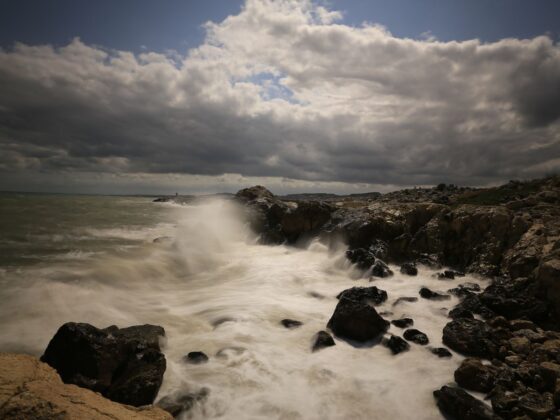New Delhi: The cascading effect of coronavirus epidemic might cause a drag of about a percentage point on global GDP growth, if the containment is delayed beyond June, a report said in Thursday. According to the report by Dun & Bradstreet, the outbreak of coronavirus is already having a considerable impact on the Chinese economy, and its implications will increase for global businesses with operations or suppliers in the region.
On January 30, the World Health Organization (WHO) declared the coronavirus (COVID-19) outbreak a global health emergency. Typically, there is a slowdown in the Chinese business activity during late-January on account of the Lunar New Year holidays. This is generally factored into the inventory planning by global businesses, hence, the impact on them has so far been muted, the report said.
“However, the extent of impact on global businesses will depend on how soon the virus is contained,” the report said adding that the role of China in the global economy has increased manifolds. The Dun & Bradstreet data shows that 22 million businesses, or close to 90 per cent of all active businesses in China, are located in the most-impacted regions.
“With the impact of the outbreak on the Chinese economy, the cascading effect might cause a drag of approximately one percentage point on global GDP growth if containment is delayed beyond the summer of 2020 (June),” the report noted.
The data shows that at least 220 Indian firms have legal linkages with around 350 companies in China. Of these 220 Indian companies, 58 per cent are in the manufacturing sector, 40 per cent are in the services sector and the remaining 2 per cent are in the construction sector. “While companies engaged in sectors such as retail trade, wholesale trade and transportation are expected to have foregone revenues, companies engaged in sectors such as construction and certain manufacturing segments will experience a pile-up of their order books and have a deferred growth,” the report said.
The report further noted that China and Hong Kong together constitute 9 per cent of India’s export basket and over 17 per cent of India’s import basket. “While some exporters may need to diversify into other markets to minimise their supply chain and cashflow disruptions, some exporters in sectors such as medical equipment may be able to increase their supply to China,” the report noted.
Two elderly former passengers from the coronavirus-wracked Diamond Princess died Thursday, Japanese authorities said, as fears mount for those who have left the ship after testing negative for the virus. The man and woman, both Japanese and in their 80s, were taken off the cruise ship last week and died in hospital, the first fatalities among the more than 600 passengers and crew who have tested positive for the virus.
The man had a pre-existing condition of bronchial asthma and a history of angina treatment, the health ministry said in a statement, but the woman had no known pre-existing conditions. The direct cause of her death was pneumonia. “I pray for their souls and offer condolences to their bereaved families,” Health Minister Katsunobu Kato told MPs. “The two were sent to medical facilities when they showed symptoms. I believe that they received the best possible treatment,” he said. The huge vessel moored in Yokohama near Tokyo is easily the biggest coronavirus cluster outside the Chinese epicentre, with 621 positive cases confirmed among the passengers and crew. On Wednesday, 443 passengers disembarked after testing negative for the COVID-19 virus and not showing symptoms during a 14-day quarantine period. The removal of all passengers was expected to take at least three days. More passengers left the ship Thursday, packing into yellow buses and leaving for stations and airports to head home. But questions are increasingly being asked as to why former Diamond Princess passengers are able to roam freely around Japan’s famously crowded cities, even if they have tested negative. “Is it really safe to get off?” screamed a headline in the Nikkan Sports tabloid. The paper quoted one passenger who said he was tested on February 15, but only left four days later. “I thought I could be infected during the four days. I thought ‘Is it really OK’?” The Diamond Princess was quarantined on February 5 when a passenger who left in Hong Kong was found infected with the virus. Passengers were confined to cabins except for brief trips on deck wearing masks and gloves, when they were told to keep their distance from others. But a specialist in infectious diseases at Kobe University rocked the boat with a video slamming “completely chaotic” quarantine procedures onboard rare criticism from a Japanese official. “The cruise ship was completely inadequate in terms of infection control,” said Kentaro Iwata in videos he has since deleted, saying “there is no need to discuss this further”.
The videos had been viewed more than a million times in Japanese and hundreds of thousands of times in English. Speaking to reporters on Thursday, Iwata said he had heard from a colleague on board that quarantine procedures had improved. “I think that because of the improvement, the risk of secondary infection has been reduced for the passengers. It remains for the crews,” he said.
However, he recommended that all those disembarking the ship should be monitored for at least 14 days and should avoid contact with others. Japanese authorities have defended their procedures, stressing that risky and safe areas were strictly divided and there was a station installed for safely removing contaminated gear. “We’ve been doing our best in the circumstances,” Kato told MPs on Thursday morning. “I want you to understand that not only our officials at the health ministry but also Self-Defense Forces officials and medical officials are working desperately hard,” he added. The government also released a document from the National Institute of Infectious Diseases (NIID), which pointed to “clear evidence that substantial transmission of COVID-19 had been occurring prior to implementation of quarantine on Diamond Princess.”
“Quarantine intervention was effective in reducing transmission among passengers,” the report concluded. The NIID also noted the unique situation faced by Japanese authorities. “Due to the nature of the ship, individual isolation of all those aboard was not possible. Sharing of cabins was necessary, and some crew had to continue to perform essential duties for the functioning of the vessel.” The 1,045 crew members on board are expected to endure a further 14-day quarantine after the last passenger has disembarked. Several countries have evacuated their citizens from the ship and insisted they undergo a further 14-day quarantine when they arrive on home soil. Outside the Diamond Princess, Japan has seen 84 cases











